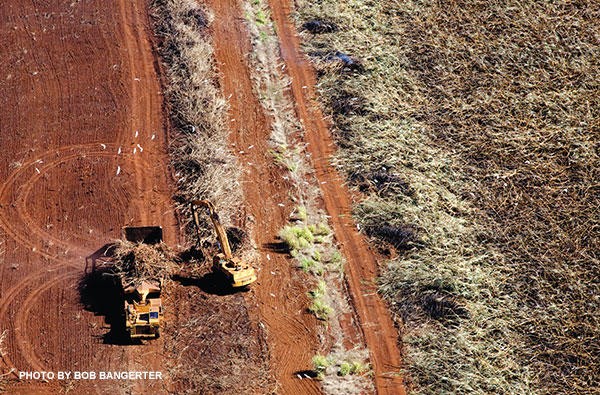
The company’s harshest critics insist that Volner is sugarcoating his assessments of what is released into the air, and the dangers those particulates pose. Opponents say the plantation’s business model is based on outdated technology. Websites and Facebook pages like “Stop Sugar Burning on Maui” call for an absolute halt to cane fires. So did Maui minister Laki Ka‘ahumanu, when he stood with other sign-waving protestors along Pu‘unene Avenue last year. “My wife has suffered with the asthma,” Ka‘ahumanu says. “Every time they burn, she has to go to the doctor and get another inhaler. If the owners of sugarcane ever got in one house full of smoke, they wouldn’t last long.”
Irene Bowie, executive director of the community-growth advisory foundation Maui Tomorrow, takes a more middle-of-the-road approach. She says as Maui grows and weather patterns change, HC&S must at least continue to adapt.
“We can keep growing cane and keep the workers employed, but we need to use twenty-first-century farming practices,” Bowie says. Suggestions from Maui Tomorrow include moving burning away from burgeoning population centers, expanding notification to warn residents of chemical spraying as well as burn schedules, and investing in new harvesting and processing equipment to maximize what is considered “green waste.” Bowie notes that in Australia, 80 percent of all sugarcane is now harvested green, with debris left behind as a mulch and dust reducer called “trash blanketing.” And although HC&S claims it cannot mechanically harvest cane in hilly or rocky areas of its 36,000-acre plantation, Bowie counters that this doesn’t mean it can’t implement the process where conditions permit — especially near schools and neighborhoods.
“Nobody wants to see agriculture go away on this island,” she says. “Nobody wants to see the central valley paved over or be fallow fields. We need a willingness from the company to [implement change] because people’s health is involved.”





